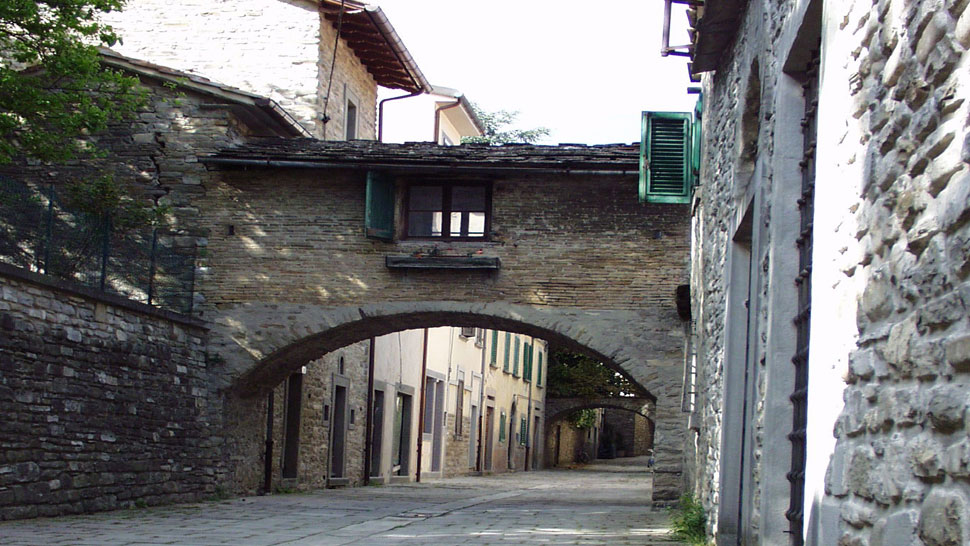PIAZZE, LOGGE, VIE STORICHE
Via Palestro a Bagno di Romagna

Via Palestro a Bagno di Romagna
From a description of 1371 Bagno appears enclosed by walls with two towers and two doors through which the road that leads from Romagna to Tuscany passes. A notary document of twenty years later speaks of a new village within and close to the castle walls, which indicates a doubling of the built-up area inside the walls, the toponym of which remained until this century when the word "Borgo Nuovo" was replaced with "Via Palestro". This village served as a view of a series of smaller building units (huts, stables, warehouses) which served larger building organizations. In the fifteenth century the opening of a new door ("door of Marcho della lana") in the wall curtain puts the "Borgo Nuovo" in direct contact with the "Piazzetta del Palagio", outside the castle. With the Florentine domination, the walls lose their defensive function, so much so that, right in the "new village", in certain parts they are incorporated into Palazzo Biozzi, a large building unit that gradually merges and merges multiple units.
Of the city walls today remains a "Torrione", an interesting defensive structure from an architectural and historical point of view: circular in shape, with a small access to the east, it is made of stone with walls made up of extremely regular courses and the roofing of sandstone. In the 16th century, the oratory of SS. Concezione, which always remains the private chapel of the Malvisi house, another complex housing structure that is becoming increasingly qualified. Between it and the oratory in the late eighteenth century a "flyover" was built to put them in direct communication. They are from the years 1820-1829 that go to join Palazzo Salvetti and Palazzo Biozzi with their respective hanging gardens under the city walls.
It is in the center of the village.












 Facebook
Facebook Instagram
Instagram Youtube
Youtube